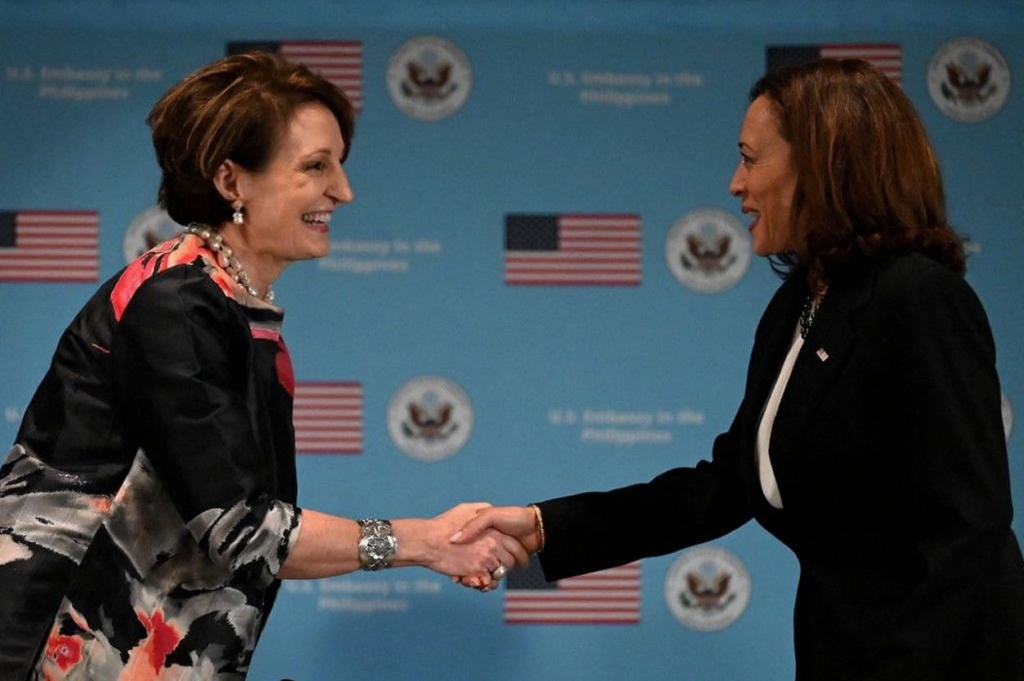
Most people fail to realise how the different types of communication can make or break their careers.
Knowing what, how, when, where and why you are communicating is vital if you want to succeed.
And to do this and master the art of communication, you first need to understand its purpose, importance, and everything else that it entails.
An introduction to communication and its evolution
Any problem, big or small, within a family, always seems to start with bad communication. Someone isn’t listening. — Emma Thompson
Have you ever spared a thought to how our ancestors used to communicate? These days, we rely completely on technology for communication but times were different back then. Before the advent of smartphones and emails, our ancestors used primitive forms of communication to thrive.
Yes, the need for communication has been deeply ingrained in human history since the very beginning. Only its means have changed. Interestingly, the original communication system before the spoken language even evolved was based on the ability to read a person’s attitudes. (1)
Thousands of years ago, our ancient ancestors discovered the power of communication through basic gestures, sounds, and visual cues. They used gestures, grunts, and facial expressions to convey their thoughts and intentions.
As language evolved, so did our ability to communicate complex ideas. Ancient civilisations created written languages like hieroglyphics and cuneiform, allowing information to be recorded and shared over great distances. This was perhaps the first instance of recorded communication at work.
Fast forward to the present day, and communication has changed its meaning completely. We have now entered the digital age, wherein modes of communication have expanded exponentially, from face-to-face conversations to phone calls, emails, text messages, video conferences, and social media platforms. (2)
 It can be shocking to see how far good communication can take you in your career.
It can be shocking to see how far good communication can take you in your career.
Benefits of good communication: The role it plays in your career
Billionaire entrepreneur Richard Branson calls communication “an art.” And he is right. It’s an art that can make a world of difference to your professional growth.
Effective communication in the workplace can take you a long way, irrespective of your field or position. Indeed, communication at work is the foundation of successful collaboration and effective teamwork. You cannot hope to have positive relationships with colleagues and clients unless you polish your communication skills.
“Great things in business are never done by one person. They’re done by a team of people.” — Steve Jobs, American inventor and co-founder of Apple
The purposes of communication are extensive. This skill alone can play a vital role in increasing productivity by up to 25% (3), improving problem-solving and enhancing overall job satisfaction.
It enables you to present your viewpoint clearly and concisely. Hence, it helps ensure that everyone involved in a task or project is on the same page. This minimises the risk of misunderstandings and also avoids costly errors.
Effective communication in the workplace also allows for a smooth flow of information, feedback, and ideas. As a result of this, it becomes easier for individuals to make informed decisions and take appropriate actions.
There’s a reason that Jeff Bezos banned the use of digital media while presenting ideas. He wanted his employees to present their viewpoints using their words so that the message wasn’t lost.
Good communication at work will help you build strong connections with not only colleagues and clients but also superiors as well.
Keep in mind that good communication skills are highly sought after by employers. Your ability to articulate your thoughts and listen to others demonstrates your confidence and professionalism.
These skills not only help build credibility and trust but also contribute to your personal and professional growth. By effectively expressing your thoughts and ideas, you can showcase your expertise and value to your colleagues and superiors. This can lead to increased recognition, career advancement opportunities, and overall job satisfaction.
How you’re sabotaging your career with bad communication without knowing it
The kinds of errors that cause plane crashes are invariably errors of teamwork and communication. — Malcolm Gladwell
A lot of people are unaware of how their subpar communication at work is actually hindering their growth. Poor written communication is among the main culprits of deaths of careers in recent times.
In today’s digital age, written communication is more prevalent than ever before. Emails, memos, and reports are essential tools for conveying information, sharing ideas, and collaborating with colleagues.
However, sloppy grammar, spelling errors, and unclear messages can create a negative impression and undermine your professional credibility.
Unfortunately, this is not all. A lot of people also fail at verbal communication. Speaking too quickly, or failing to articulate ideas clearly, and trying to dominate conversations without actively listening to others can all be detrimental communication mistakes that can cost you your career.
These communication pitfalls can lead to misunderstandings, misinterpretations, and a lack of trust and respect from colleagues and superiors.
It’s not uncommon for nonverbal communication to be overlooked but it’s another reason for people to fail in their careers. Keep in mind that how your messages are received is influenced by your body language, tone of voice, and even facial expressions.
For instance, if you avert eye contact or approach someone with crossed arms, your professional relationships can take a turn for the worse.
 Pay attention to the subtle cues beyond our words when talking.
Pay attention to the subtle cues beyond our words when talking.
5 types of communication: Everything you must know
By now, you must have realised the purposes of communication and the role it can play in your career growth. So you should now familiarise yourself with the various types of communication and how they can help you excel professionally.
Verbal communication
This is among the fundamental aspects of effective communication in the workplace. It involves the use of spoken words to convey messages, ideas, and information. Mastering verbal communication is crucial for professional success, as it allows you to express yourself clearly, build strong relationships, and influence others positively.
There are many forms of verbal communication you must handle at work. For instance, there’s conversational communication which is used in everyday conversations and interactions. For this, you need to learn to be an active listener and endeavour to engage in meaningful dialogue. Make sure that you express your thoughts and opinions clearly. Engaging in open discussions during team meetings to share your ideas is a part of this.
Then there’s presentation communication wherein you deliver a sales pitch or a project update. In this instance, you need to learn to articulate your thoughts confidently. You must structure your presentation such that it ensures a clear and impactful message. Keep in mind that nearly 69% of employers deem oral communication as one of the most crucial hiring criteria!
 Our body language, facial expressions, gestures, and tone of voice are how we communicate without words.
Our body language, facial expressions, gestures, and tone of voice are how we communicate without words.
Non-verbal communication
This is quite a powerful tool too that can have quite an impact on your success in the workplace. Nonverbal communication encompasses the messages we send through our body language, facial expressions, gestures, and tone of voice.
One excellent example of nonverbal communication is your body language, including the way you stand, sit, or move during a conversation or presentation. Maintaining an open posture with relaxed shoulders and making eye contact with others shows confidence and interest in the conversation. On the other hand, crossing your arms or avoiding eye contact may signal defensiveness or disinterest.
Similarly, facial expressions are another important aspect of nonverbal communication. Smiling conveys friendliness and approachability, while frowning or furrowing your brow can indicate confusion or displeasure. Paying attention to your facial expressions and being aware of how they might be interpreted by others is crucial in maintaining positive communication, especially at work.
In fact, it’s not only during in-person interactions that nonverbal communication should be given importance. These cues are just as vital during Zoom conversations too!
Written communication
Written communication has become an integral part of our professional lives. It allows us to convey ideas, share information, and collaborate with colleagues and clients. Mastering the art of written communication is essential if you want to reach greater heights professionally.
Written communication refers to the exchange of information through written words, whether it be in emails, reports, memos, or even social media posts. It is imperative that you communicate clearly and effectively to ensure that your message is understood accurately by the intended audience.
For instance, emails are a common method of communication in the professional world, and it is essential to compose them with clarity and professionalism. Indeed, over 306 billion emails are sent and received each day And they are the primary source of communication for nearly 74% of working adults.
So, you must pay attention to grammar, spelling, and punctuation to ensure your message comes across as polished and credible.
The same goes for creating reports or proposals. These documents require organised and structured writing, presenting information logically and cohesively. Use clear headings, bullet points, and visuals where appropriate to enhance readability and comprehension. Remember, perfecting written communication requires practise and attention to detail.
 Less than 2% of the world population have formal education about listening skills.
Less than 2% of the world population have formal education about listening skills.
Listening
Do you know that less than 2% of the population actually has formal education about listening skills? Keep in mind that listening involves not only hearing the words being spoken but also genuinely understanding and responding to what is being conveyed. To master this art, it is essential to practise active listening. Active listening means giving your full attention to the speaker, maintaining eye contact, and providing verbal and non-verbal cues to show that you are engaged in the conversation.
Examples of active listening techniques include:
- nodding your head
- asking clarifying questions
- summarising the speaker’s main points to ensure comprehension
If you want to improve your listening skills, you should remove distractions and create a conducive environment for focused conversations.
Practise empathy by putting yourself in the speaker’s shoes to better understand their viewpoint.
Avoid interrupting and resist the urge to formulate your response while the other person is still talking. Instead, patiently wait for your turn to contribute.
Visual communication
This form of communication involves using visual elements such as images, graphs, charts, and videos to convey information.
For instance, infographics are an excellent way to present complex data or statistics in a visually appealing and easily digestible format. By combining images, icons, and text, infographics can simplify information and make it more memorable.
Presentations are another form of visual communication. Visual aids such as charts, diagrams, and illustrations can help illustrate key points and make your presentation more impactful.
If you want to excel in visual communication, you should keep your visuals simple and uncluttered. Use only high-quality images and graphics and choose colours and fonts that enhance readability and reinforce your brand identity.
And don’t forget, our brain can process images 60,000 times faster than text. So make sure to use that to your advantage.
Create waves professionally with effective communication at work
All types of communication can make quite a difference to your professional demeanour and impact how you are perceived by your clients and superiors. So it’s worth the effort to master the art of communication in every form. Nothing can then hinder your path to success!










